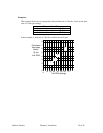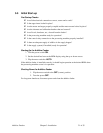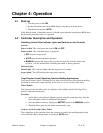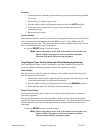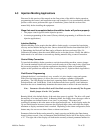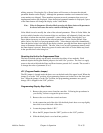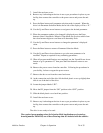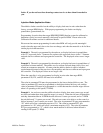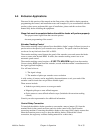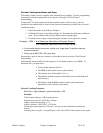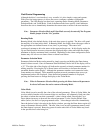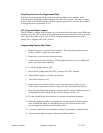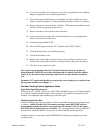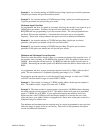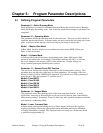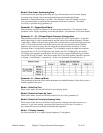Additive Feeders Chapter 4: Operation 28 of 55
4-4 Extrusion Applications
Discussed in this portion of the manual are the finer points of the additive feeder operation,
programming the control, and installation notes and examples. If you are unfamiliar with this
product or have never performed this type of installation, please read this section of the
manual fully before installing the equipment.
Steps that must be completed before the additive feeder will perform properly:
-The proper control signal from the extrusion process
-Accurate programming of the control
Extruder Tracking Control
The extruder tracking control option allows the additive feeder’s auger (follower) to turn in a
precise ratio to the speed of your extruder screw (master). The speed control on the feeder
can be set for any feed ratio from 10% to 200%.
The extruder tracking control detects the speed of the extruder screw and causes the feeder
screw to rotate at the desired RPM. In effect, the extruder tracking control acts as an
automatic speed control.
The extruder tracking control requires a 5 VDC TTL NPN RPM signal from the extruder.
Use an existing RPM signal from the extruder; consult with the extruder’s manufacturer for
the signal type and frequency.
You will need to know:
1. The signal voltage
2. The number of pulses per extruder screw revolution
A wide variety of sensors can be supplied by the manufacturer to suit your needs if the
extruder control circuit does not provide a suitable signal.
These sensors include:
• Inductive proximity sensors to sense gear teeth.
• Magnetic pickups to sense affixed magnets.
• Optic sensors to sense affixed reflective tape. (Included with extrusion tracking
control)
Consult your sales representative for additional information.
Control Relay Connection
To interlock the additive feeder operation to an extruder, remove jumper (J1) from the
terminal block in the control enclosure and wire in the control relay signal from the
processing machine. Connecting the additive feeder to the control relay simply ensures that
when the extrusion process stops so does the additive feeder. (Without this control
connection, the auger may continue feeding material for a short time).



